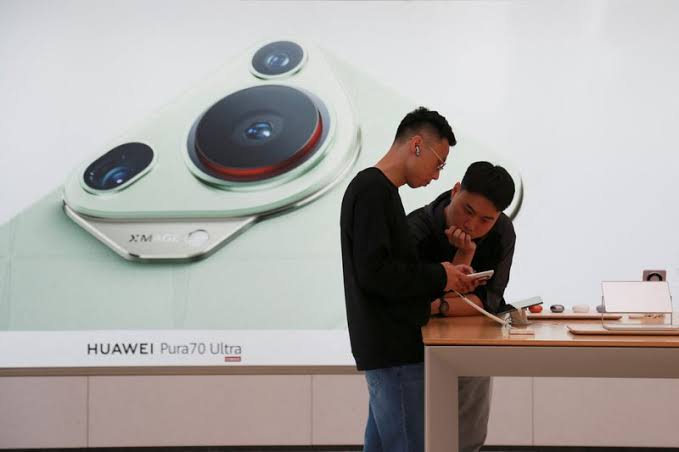Physical Address
60 Ekwema Cres, Layout 460281, Imo
Physical Address
60 Ekwema Cres, Layout 460281, Imo

The global smartphone landscape is witnessing a renewed fire being ignited.
Huawei, the Chinese tech titan, is making a strategic comeback to challenge Apple’s dominance, particularly in the premium smartphone market.
After facing significant supply chain hurdles due to US sanctions, Huawei is deploying a multifaceted strategy to not only compete with Apple but potentially reclaim its position at the top.
A cornerstone of Huawei’s strategy is its revamped retail experience.
The company is aggressively expanding its network of premium flagship stores across China, often strategically positioning them in close proximity to Apple stores.
This bold move signifies Huawei’s intent to directly engage with consumers who are considering Apple products.
The newly opened flagship store in Shanghai, China, exemplifies this approach.
Located directly opposite Apple’s flagship outlet, the three-story Huawei store boasts a historic building in a bustling financial district.
The spacious environment features not just smartphones but also showcases a range of premium Huawei products, including tablets, smartwatches, televisions, and even electric vehicles developed in collaboration with Chinese automakers.
This holistic approach allows consumers to experience the entire Huawei ecosystem, potentially swaying them towards a more integrated brand experience.
Huawei understands that hardware prowess is paramount in the premium smartphone segment.
The company’s latest flagship offering, the Pura 70 Ultra, boasts cutting-edge specifications that directly compete with Apple’s iPhone 15 Pro Max.
Positive reviews for the Pura 70 Ultra highlight its camera capabilities, performance, and battery life.
Significantly, Huawei has priced the Pura 70 Ultra competitively at 9,999 yuan ($1,300), matching the iPhone 15 Pro Max.
This strategic pricing ensures that price won’t be a deterrent for consumers considering both brands.
Furthermore, Huawei’s HarmonyOS operating system is receiving ongoing updates and improvements, offering a robust and user-friendly experience that can rival Apple’s iOS.
One of the biggest challenges Huawei faces is the app ecosystem. Due to US sanctions, Huawei devices lack access to certain popular Google apps.
However, the company is actively working on bolstering its own app store, AppGallery, by attracting developers and offering incentives.
Additionally, Huawei is forging partnerships with local app developers in China and other key markets to provide users with robust alternatives to popular Google apps.
Read More: Amidst Growing Competition, Apple Slashes iPhone Prices in China to Boost Sales
While Huawei is currently concentrating on regaining market share in China, it is not neglecting emerging markets.
Huawei is acutely aware of the importance of the Chinese market.
With a 17% market share compared to Apple’s 15.6% in Q1 2024 (as per IDC reports), China presents a crucial battleground for dominance.
The company recognizes the vast potential these markets hold and is tailoring its strategy accordingly.
Huawei is offering a wider range of mid-range smartphones at competitive prices in these regions, catering to the budget-conscious consumer.
This strategy allows Huawei to capture a larger market share and build brand loyalty amongst these growing demographics.
Huawei’s multi-pronged approach indicates a long-term commitment to compete with Apple.
The company’s focus on innovation, brand experience, a robust app ecosystem, and strategic pricing positions it well to challenge Apple’s dominance.
While the road ahead will undoubtedly be challenging, Huawei’s renewed focus and strategic execution hold the potential to reshape the global smartphone landscape in 2024 and beyond.
Was this information useful? Drop a nice comment below. You can also check out other useful contents by following us on X/Twitter @siliconafritech, Instagram @ Siliconafricatech, or Facebook @ Silicon Africa.